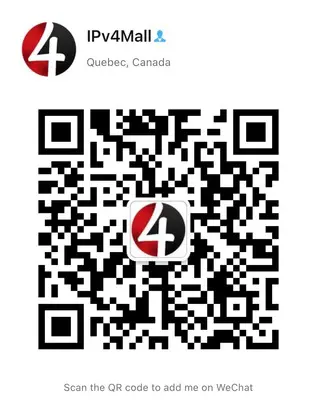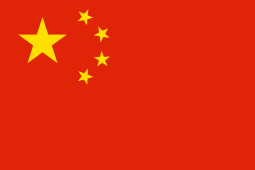![]()

September 27, 2023
The Evolution and Implications of IPv4 Mapped IPv6 Addresses
Discover IPv4 mapped IPv6 addresses: bridging the gap between protocols, enabling smooth communication & gradual migration. Advantages & implications explained.
The transformative impact of the internet on modern society cannot be overstated. From connecting people across the globe to enabling a myriad of digital services, the Internet has become an integral part of our daily lives. As the internet has grown, so has the need for unique IP addresses to identify and communicate with devices. This led to the development of Internet Protocol version 4 (IPv4), which, over time, revealed its limitations in accommodating the exponential growth of internet-connected devices. To address this challenge, Internet Protocol version 6 (IPv6) was introduced, offering a significantly larger address space.
However, transitioning from IPv4 to IPv6 has been a gradual and complex process, prompting the emergence of innovative solutions like IPv4 mapped IPv6 addresses. In this comprehensive article, we delve into the evolution, mechanics, advantages, and potential implications of IPv4 Mapped IPv6 addresses.
The Genesis of IPv4 Mapped IPv6 Addresses
The imminent exhaustion of IPv4 addresses drove the inception of IPv6. IPv4’s 32-bit address structure could only support around 4.3 billion unique addresses, a number that was swiftly diminishing as more devices connected to the internet. The rapid proliferation of smartphones, IoT devices, and other connected technologies exacerbated the strain on the IPv4 address space.
IPv6, with its 128-bit address format, presented a colossal 340 undecillion addresses, essentially resolving the address depletion issue for the foreseeable future. The vast address space offered by IPv6 was seen as the ultimate solution to the exhaustion of IPv4 addresses and a foundation for the continued growth of the internet.
However, transitioning to IPv6 presented its own set of challenges. Existing systems, networks, and applications were predominantly designed around IPv4. Transitioning directly to IPv6 posed significant difficulties, such as the need to reconfigure networks, update software, and address compatibility issues. To ensure a seamless coexistence and interoperability between the two protocols during the transition phase, the concept of IPv4 mapped IPv6 addresses emerged.
IPv4 mapped IPv6 addresses were formally introduced in RFC 4291 as a transitional mechanism. The central idea was to enable IPv6-capable devices and networks to communicate with their IPv4-only counterparts using a compatible addressing scheme. This bridging mechanism aimed to facilitate a smooth and controlled transition, allowing devices and networks to interact seamlessly despite differing protocol versions.
Understanding IPv4 Mapped IPv6 Addresses
The construction of IPv4 Mapped IPv6 addresses is both logical and practical. These addresses consist of a 96-bit prefix of zeros followed by a 32-bit IPv4 address. This structure not only distinguishes IPv4 Mapped IPv6 addresses from standard IPv6 addresses but also facilitates their use in a dual-stack networking environment.
The “::” notation is employed to abbreviate sequences of zeros in IPv6 addresses. Thus, an IPv4 Mapped IPv6 address is represented as:
::FFFF:IPv4Address
Here, “IPv4Address” signifies the 32-bit IPv4 address being mapped. The “::FFFF:” segment serves as a clear indicator of an IPv4 Mapped IPv6 address.
For instance, if we consider an IPv4 address such as 192.168.1.10, its IPv4 Mapped IPv6 counterpart would be “::FFFF:192.168.1.10”.
Advantages of IPv4 Mapped IPv6 Addresses
Interoperability
The most notable advantage of IPv4 Mapped IPv6 addresses is their ability to establish seamless communication between IPv4-only and IPv6-capable devices and networks. This attribute proves invaluable during the transitional period when both protocols coexist. By leveraging IPv4 Mapped addresses, organizations can gradually migrate to IPv6 without compromising communication with existing IPv4-based systems.
Transition Facilitation
IPv4 Mapped IPv6 addresses provide a critical tool for organizations to progressively migrate their infrastructure and services from IPv4 to IPv6 without causing disruptions to pre-existing IPv4-based systems. This approach allows organizations to deploy IPv6 gradually, ensuring compatibility with legacy systems during the transition.
Application Adaptability
Applications designed for IPv4 compatibility can be made IPv6-compatible more efficiently by incorporating IPv4 Mapped addresses. This reduces the complexity and effort associated with code modifications during the transition. For applications that cannot immediately support IPv6 natively, IPv4 Mapped addresses serve as a bridge, enabling them to communicate with both IPv4 and IPv6 networks.
Dual-Stack Implementation
The introduction of IPv4 Mapped IPv6 addresses simplifies the deployment of dual-stack networks. In such networks, devices and networks support both IPv4 and IPv6 concurrently, enabling a controlled and phased migration process. Organizations can ensure that their networks are capable of handling both protocols simultaneously, minimizing disruptions during the transition.
Potential Implications and Considerations
While IPv4 mapped IPv6 addresses offer numerous advantages, careful consideration of potential implications is essential
Security Landscape
The utilization of IPv4 mapped IPv6 addresses may raise security concerns due to the potential exploitation for malicious activities. Adhering to robust network configurations and firewall rules is crucial to mitigate such risks effectively. Network administrators must closely monitor traffic and ensure that proper security measures are in place to prevent abuse.
Complexity Management
Managing dual-stack networks and navigating the intricacies of two addressing systems (IPv4 and IPv6) can introduce complexity, particularly for larger organizations or expansive networks. Network administrators and IT teams must carefully plan the transition to minimize disruptions and ensure the smooth operation of both protocols.
IPv4 Dependency
Overreliance on IPv4 Mapped IPv6 addresses might inadvertently hinder the adoption of pure IPv6 solutions, thereby impeding the overarching transition to IPv6. Organizations should focus on gradually phasing out IPv4 dependencies to fully realize the benefits of IPv6, such as enhanced security, improved performance, and support for a vast number of devices.
Addressing Strategies
Thoughtful planning of addressing policies becomes imperative when implementing IPv4 mapped IPv6 addresses. This strategy ensures clarity and prevents potential conflicts between the two address types. Organizations should carefully design their IPv6 address allocation plans to accommodate future growth and avoid address exhaustion in the long run.
IPv4 mapped IPv6 addresses stand as a pivotal transitional mechanism that has facilitated the harmonious coexistence of IPv4 and IPv6 networks during a transformative era of digital expansion. By enabling interoperability between divergent protocol versions, these addresses have played an instrumental role in smoothing the migration from the depleting IPv4 address pool to the expansive realm of IPv6. While challenges and considerations accompany their adoption, IPv4 Mapped IPv6 addresses undeniably represent a valuable asset for network administrators and organizations embarking on a methodical and gradual transition to the new internet protocol.
Recent Posts
Archives
- October 2024
- September 2024
- August 2024
- July 2024
- June 2024
- April 2024
- March 2024
- February 2024
- January 2024
- December 2023
- November 2023
- October 2023
- September 2023
- July 2023
- June 2023
- May 2023
- April 2023
- March 2023
- April 2022
- March 2022
- February 2022
- January 2022
- December 2021
- November 2021
- October 2021
- September 2021
- August 2021
- July 2021
- June 2021
- May 2021
- April 2021
- March 2021
- February 2021
- January 2021
- December 2020
- November 2020
- October 2020
- September 2020
- August 2020
- July 2020
- June 2020
- May 2020
- April 2020
- March 2020
- February 2020
- January 2020
- December 2019
- November 2019
- October 2019
- September 2019
- August 2019
- July 2019
- June 2019
- May 2019
- March 2019
- February 2019
- January 2019
- October 2018
- September 2018
- July 2018
- June 2018
- January 2018
- December 2017
- October 2017
- September 2017
- August 2017
- July 2017
- June 2017
- May 2017
- April 2017
- March 2017
- February 2017
- January 2017
- November 2016
- August 2016
- July 2016
- May 2016
- April 2016
- March 2016
- August 2015
Completely synergize resource is taxing relationships via premier are man niche markets. Professionally cultivate one to one customer.
Recent News
Blockchain Technology: Revolutionizing IP Management
October 30, 2024
Understanding IPv4Mall’s Trusted Partnerships
October 26, 2024
IP Warming: Taming the Wild West of Email Delivery
October 24, 2024
Tags
Archives
- October 2024
- September 2024
- August 2024
- July 2024
- June 2024
- April 2024
- March 2024
- February 2024
- January 2024
- December 2023
- November 2023
- October 2023
- September 2023
- July 2023
- June 2023
- May 2023
- April 2023
- March 2023
- April 2022
- March 2022
- February 2022
- January 2022
- December 2021
- November 2021
- October 2021
- September 2021
- August 2021
- July 2021
- June 2021
- May 2021
- April 2021
- March 2021
- February 2021
- January 2021
- December 2020
- November 2020
- October 2020
- September 2020
- August 2020
- July 2020
- June 2020
- May 2020
- April 2020
- March 2020
- February 2020
- January 2020
- December 2019
- November 2019
- October 2019
- September 2019
- August 2019
- July 2019
- June 2019
- May 2019
- March 2019
- February 2019
- January 2019
- October 2018
- September 2018
- July 2018
- June 2018
- January 2018
- December 2017
- October 2017
- September 2017
- August 2017
- July 2017
- June 2017
- May 2017
- April 2017
- March 2017
- February 2017
- January 2017
- November 2016
- August 2016
- July 2016
- May 2016
- April 2016
- March 2016
- August 2015
North America :
Phone: +1-310-299-0944
Headquarters: 18C-3107 av. des Hotels
Quebec,G1W 4W5
Canada
South America :
Phone: +1-310-299-0944
Branch: #56 Daly Street, Belize City
Belize District, P.O. Box 1825
Belize











Recent Comments